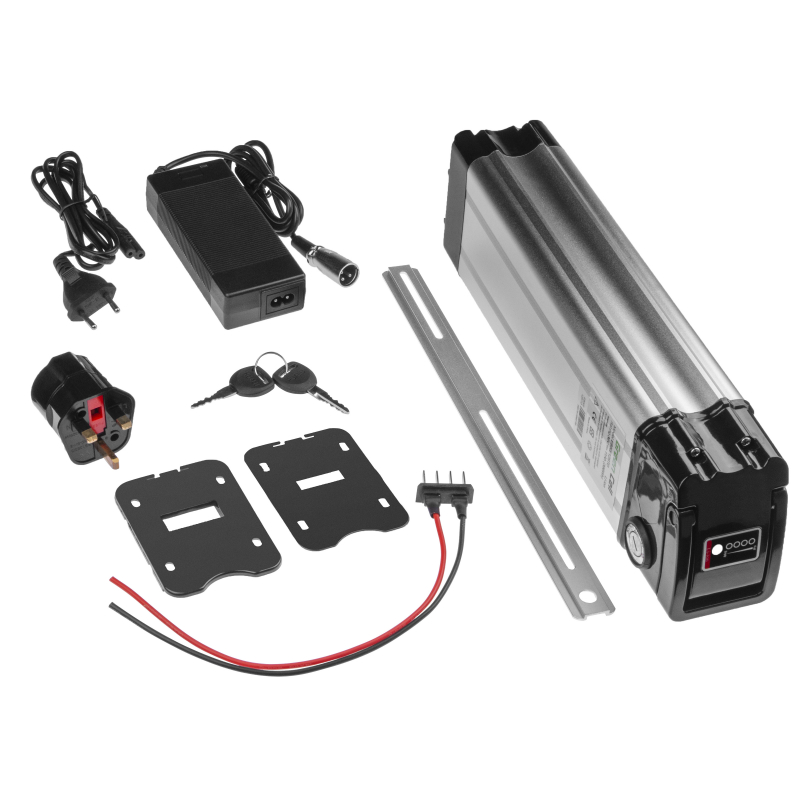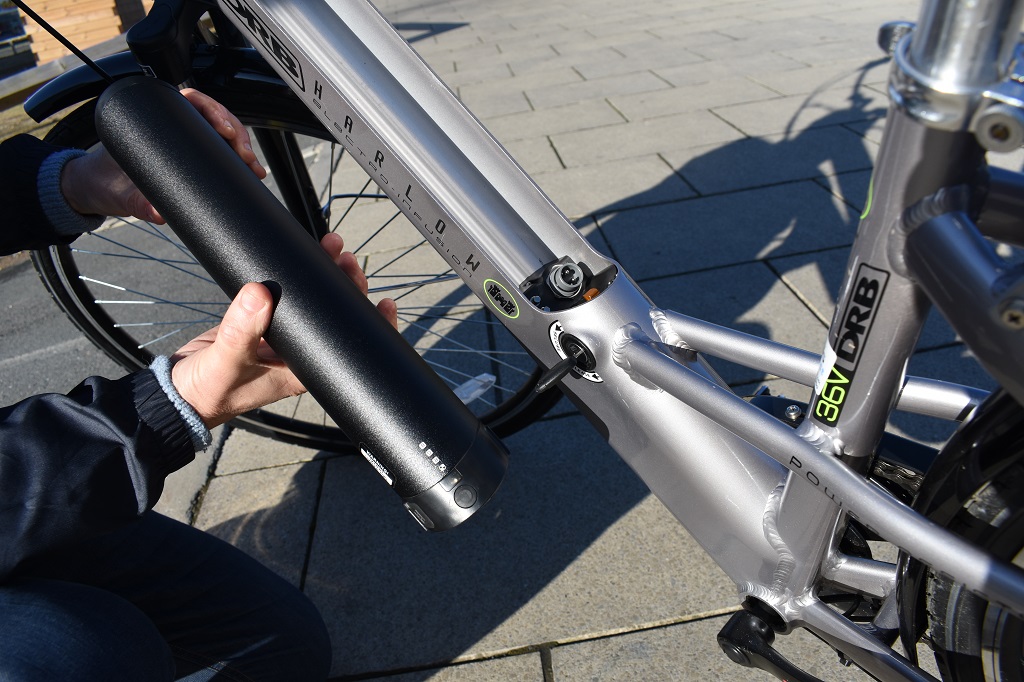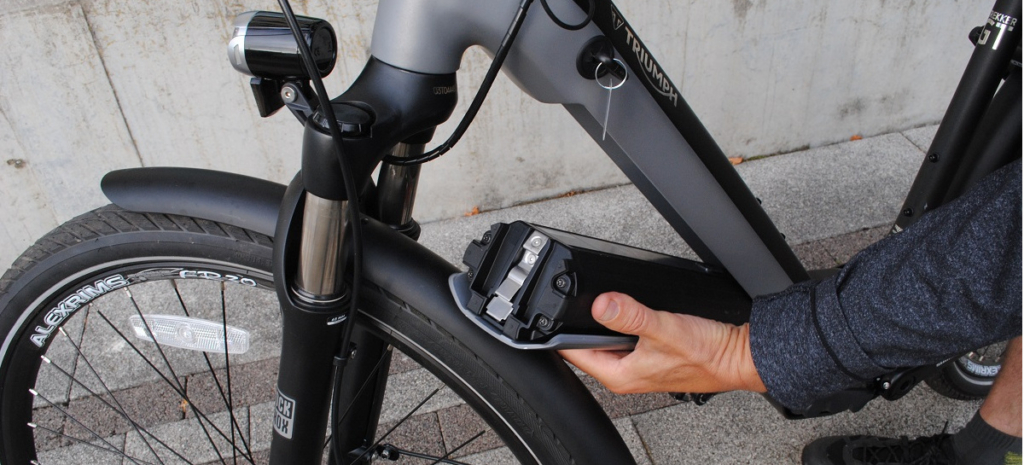E-Bike Battery Life: The Definitive Guide
In a world striving for sustainability, electric bikes or E-bikes have pedaled their way into the heart of modern commuting. With their seamless blend of traditional cycling and motor-assisted travel, E-bikes offer an eco-friendly solution to urban mobility, fitness, and recreation. However, any E-bike owner will tell you, the true power of this green machine lies within its battery.
Understanding the life expectancy of an E-bike battery, its various components, how to maximize its longevity, and when to replace it is integral to getting the most out of your E-bike experience. So, if you’ve ever wondered about the pulse of your electric two-wheeler – the battery life, we’ve got a power-packed discussion coming your way. Stay tuned, as we demystify the secrets of E-bike battery lifespan and help you make the most of your electrifying ride.
The Anatomy of an E-Bike Battery

At the heart of every E-bike lies its core power source – the battery. To understand the life expectancy of your E-bike battery, it’s vital to first unravel its structure and delve into the types of batteries commonly used in E-bikes.
Components of an E-Bike Battery:
The main components of an E-bike battery include the battery cells, which hold the energy, the Battery Management System (BMS) that regulates the charge and discharge of these cells, and the housing, which protects the internal components.
The cells store and supply the energy needed to power the motor. Their quality, configuration, and type primarily determine the overall performance and lifespan of the battery.
The BMS is essentially the brain of the battery. It maintains cell balance, monitors voltage and temperature, and protects the cells from scenarios like overcharging or over-discharging that could harm the battery or reduce its lifespan.
Types of E-Bike Batteries

There are five primary types of E-bike batteries: Lead Acid, Nickel-cadmium (NiCd), Nickel-metal hydride (NiMH), Lithium-ion (Li-ion), and Lithium-ion polymer (Li-Po). Each type has its strengths and weaknesses, impacting their cost, performance, weight, and ultimately, their lifespan. You can read more about e-bike battery types here.
Lead Acid: These are the cheapest but also the heaviest. They have a lower energy density and shorter lifespan compared to the others.
Nickel-cadmium (NiCd): Slightly more efficient and lighter than lead-acid batteries, but they suffer from the ‘memory effect’ which can reduce their lifespan.
Nickel-metal hydride (NiMH): Better energy density than NiCd batteries and do not suffer as much from the memory effect, but they have a lower lifespan than lithium-based batteries.
Lithium-ion (Li-ion): The most common type used in E-bikes today. They are lightweight, have high energy density, and offer a long lifespan. However, they are more expensive.
Lithium-ion polymer (Li-Po): These batteries have similar advantages to Li-ion but can be formed into various shapes and sizes. They can also discharge energy faster, providing potential performance benefits.
Life Expectancy of Different Electric Bike Batteries

While many factors can influence the life expectancy of a battery, such as use and maintenance, different types of batteries inherently have different average life expectancies.
Lead Acid batteries typically last for 200-300 full charge cycles, NiCd and NiMH last for 500-1000 cycles,
while Li-ion and Li-Po batteries can last for over 1000 cycles.
Remember, a ‘cycle’ refers to a full discharge of the battery followed by a full recharge.
Keep in mind that as a battery approaches the end of its lifecycle, it will not hold as much charge as it did when it was new. Therefore, you’ll find your range decreasing over time, which is a common sign that the battery is nearing the end of its life.
Now that we have a clear understanding of the anatomy of an E-bike battery, we can delve deeper into understanding and maximizing our E-bike battery life.
Understanding Battery Life

As we ride along in our E-bike journey, let’s shift gears to delve into understanding what exactly we mean by ‘battery life’ and the various factors that can influence it.
Defining Battery Lifespan:
The ‘lifespan’ of an E-bike battery refers to the period over which the battery can effectively hold and discharge power to run your bike. It’s often quantified in ‘charge cycles’. A charge cycle refers to the process of charging a battery from 0% to 100% and then discharging it back to 0%. As a battery goes through more cycles, its ability to store energy (capacity) gradually diminishes until it reaches about 70-80% of its original capacity, a point at which it’s typically considered to be at the end of its useful life.
Factors Influencing the Lifespan:
Charging Cycles: Each battery has a limited number of charge cycles before its capacity starts to degrade. Once the battery goes through its specified number of cycles, its ability to hold a charge starts to decrease.
Battery Capacity: A larger battery capacity means the E-bike can run for longer before needing a recharge. However, bigger isn’t always better. The battery size should be appropriate for the intended use of the E-bike. Overworking a small capacity battery can lead to its premature failure.
Proper Storage: Storing your battery correctly when not in use is crucial to prolonging its life. Extreme temperatures and prolonged exposure to elements can degrade the battery. It’s recommended to store batteries in a dry and cool place, ideally at a partial charge level.
Usage: How you use your E-bike also plays a significant role. Frequent high-speed rides, using maximum pedal-assist levels, and regular uphill climbs all demand more from your battery, shortening its lifespan.
Average Battery Life of an E-bike
As for the average lifespan of an E-bike battery, it’s usually measured in charge cycles, and it varies depending on the type of battery, as we discussed in the previous section. Lithium-ion batteries, the most common type found in modern E-bikes, often have a lifespan of 1000 to 1500 charge cycles. Given that an E-bike battery can typically last anywhere from 25 to 70 miles on a single charge, depending on various factors like the level of assist, terrain, rider weight, and others, you could expect a well-maintained E-bike battery to last for several years before it needs replacement.
Remember, these are just averages and your mileage (literally) may vary. How you care for and use your E-bike can significantly affect your battery’s lifespan, which brings us to our next topic: How can you maximize your E-bike battery life? Stay tuned as we delve into that in our next segment.
Maximizing Your E-Bike Battery Life

Understanding the lifespan of your E-bike battery is just one side of the coin. The other side is learning how to maximize that lifespan. A well-maintained battery can last significantly longer, saving you both time and money.
Let’s look at some tips and tricks to squeeze every last bit of power from your E-bike battery.
E-Bike Battery Charging Tips
Ideal Charging Conditions: It’s crucial to charge your battery under optimal conditions. These typically include a dry, well-ventilated area with temperatures between 50°F (10°C) and 77°F (25°C). Extreme cold or heat can affect the battery’s ability to hold a charge and can shorten its lifespan.
Avoid Overcharging: Most modern E-bike batteries come with a built-in protection system that prevents overcharging. However, it’s generally good practice to unplug the battery once it’s fully charged to avoid potential damage. Overcharging can result in reduced battery efficiency and a shorter lifespan.
Regular Charging: Lithium-ion batteries, the most common type of E-bike battery, do not suffer from the memory effect. So, you don’t need to fully discharge them before recharging. In fact, frequent top-ups can help prolong the battery life.
Riding Tips for Conserving Battery Life:
Using Pedal Assist Mode Wisely: E-bikes typically have different levels of pedal assistance. Using a lower level of pedal assist not only gives you a better workout, but it also conserves battery power.
Maintaining a Steady Speed: Maintaining a steady, moderate speed is more energy-efficient than stop-and-go riding or high-speed cycling. A smooth ride at a constant speed will help your battery last longer.
Efficient Route Planning: If possible, plan your route to avoid steep hills and rough terrains that require more power. Riding on flat, smooth surfaces will help you conserve battery life.
E-bike Battery Storage and Maintenance:
Proper Temperature Conditions: Extreme temperatures can degrade your battery over time. Store your E-bike and its battery in a dry, cool place away from direct sunlight.
Regular Inspection: Check your battery regularly for any signs of damage, like cracks or bulges. Also, keep an eye on its performance. If you notice a significant drop in the range, it could be a sign that your battery’s health is declining.
Winter Care: If you live in a region with cold winters and you don’t plan on using your E-bike, consider removing the battery and storing it indoors. It’s best to store it partially charged and top it up every few months.
Remember, the key to a long-lasting battery is regular care and mindful usage. With these tips, you can not only maximize your E-bike battery life but also improve the overall performance and range of your E-bike. Now that you know how to take care of your battery, let’s move on to how you can recognize when your battery is nearing the end of its life. Stay tuned!
Recognizing Signs of a Dying Electric Bike Battery

Recognizing when your E-bike battery is nearing the end of its lifespan. It is a crucial aspect of battery management. It allows you to plan a replacement before you experience a major decrease in performance or worse, find yourself stranded with a dead battery. So, how can you tell when your battery’s best days are behind it?
Common Symptoms of a Dying E-bike Battery
Numerous symptoms can signal a failing e-bike battery. Prompt identification of these signs is crucial to safeguarding your e-bike battery life. Early detection not only extends the longevity of your e-bike’s power source but also enhances its performance and efficiency. In the following sections, we’ll outline the common signs of a waning battery and provide practical measures to help preserve your e-bike’s energy sustainability.
Reduced Range
The first and often most noticeable sign of a battery nearing the end of its lifespan is a reduction in the range. As batteries age, they gradually lose their capacity to hold a full charge. This aging process means your e-bike won’t be able to cover as many miles as it used to on a full battery. You may start to notice that your once lengthy rides are becoming increasingly shorter, even though you’re riding under the same conditions as before. This dwindling range is an essential clue that the health of your e-bike’s battery is declining, and it may soon need replacing.
Slower Speeds
Another symptom of a dying battery is a clear drop in your e-bike’s performance, particularly in terms of speed. If you notice that your e-bike’s top speed has decreased significantly, or if the bike seems to struggle when climbing hills or against strong winds, these could be signs of an ailing battery. Remember, your e-bike’s battery is the powerhouse of your ride, so any lack in power will likely be reflected in your e-bike’s speed and overall performance.
Longer Charging Times
If your battery seems to take significantly longer to charge than it used to, this could be another sign that it’s not in the best health. A healthy battery should charge within the time period specified by the manufacturer. However, as batteries age, they often take longer to reach a full charge. Additionally, if your battery never seems to fully charge, this could indicate that it’s no longer able to hold the amount of energy it once could. This extended charging time and inability to fully charge are clear signs of a battery issue.
Physical Changes
Finally, any visible signs of change in your battery’s physical state can be a clear and urgent indication that it needs to be replaced. This could include swelling, leakage, or corrosion on the battery casing. If you notice any of these symptoms, it’s crucial to take action immediately. Not only do these signs indicate a significant deterioration in your battery’s health, but they could also lead to further issues with your e-bike, or in severe cases, they could even pose a safety risk.
How to Preserve Your E-Bike’s Energy Sustainability

Optimizing your e-bike’s battery life is crucial for maintaining your ride’s efficiency and longevity. Here are some useful strategies to enhance and preserve your e-bike battery life:
1. Regular Charging
Consistent and regular charging can significantly boost your battery’s lifespan. Unlike certain types of batteries, most e-bike batteries don’t suffer from a ‘memory effect’, so you don’t need to wait until they’re almost empty before recharging. It’s often recommended to keep the battery level between 20% and 80% to maintain optimal health.
2. Optimal Storage Conditions
Exposing your e-bike battery to extreme temperatures can drastically shorten its lifespan. High heat can cause the battery to degrade faster, while cold temperatures can decrease its capacity. Therefore, it’s best to store your e-bike in a cool, dry place when not in use, and particularly during winter or extreme heat.
3. Mindful Usage
The more power you demand from your e-bike, the harder the battery has to work. Conserving power can be as simple as pedaling more to assist your bike, especially when going uphill. Riding at the highest power setting all the time can deplete the battery more quickly. Use the higher power settings sparingly and lower settings when possible.
4. Regular Maintenance
Just like any other part of your e-bike, the battery requires regular maintenance to keep it functioning optimally. This includes cleaning the battery contacts and checking for any physical signs of damage or wear. Regularly inspecting the battery ensures early detection of potential problems.
5. Battery Upgrade
If your e-bike battery is older and you’ve started noticing a decline in its performance, consider an upgrade. Newer models often have improved technology that can extend the ebike battery life and performance.
By incorporating these practices into your e-bike usage and maintenance routines, you can significantly enhance your e-bike’s energy sustainability, ensuring enjoyable rides for years to come.
How to Check Your Electric Bicycle Battery Health?
Many modern E-bikes have integrated battery management systems (BMS) that monitor battery health. You might be able to access this information through an app or a display on the E-bike. If this is not an option, you can also use a multimeter to measure the voltage of the battery. Compare the reading to the voltage that the battery is rated for when fully charged. If it’s significantly lower even after a full charge, it’s a sign that the battery’s health is declining.
When to Consider Replacing the Battery?
When you start noticing the symptoms mentioned above, it’s time to consider replacing your battery. A battery typically needs to be replaced when its capacity drops to about 70-80% of its original capacity. To put that in perspective, if a fully charged battery is used to power a 50-mile ride, it’s time to replace it when that range drops to around 35-40 miles.
Remember, using a dying battery can put undue stress on the motor and other electrical components of your E-bike. A timely replacement not only ensures a smooth and efficient ride but can also prevent more costly damage to your E-bike in the long run. You can read more about how to do an e-bike battery replacement.
How to dispose of your old Electric Bike Battery responsibly
Proper disposal of your old e-bike battery is not just about environmental responsibility; it’s a critical step in promoting sustainable e-bike usage. Here are some guidelines on how to safely and responsibly discard your used e-bike battery:
Do Not Treat it as Household Waste
The critical first step in responsibly disposing of your old e-bike battery is understanding that it should not be discarded as regular household waste. E-bike batteries are typically composed of various types of metals, including lithium and cobalt. These elements can pose significant environmental risks if they end up in landfills, where they can leak and contaminate soil and groundwater. As such, an old e-bike battery requires special handling for disposal.
2. Use Battery Recycling Facilities
Battery recycling facilities are designed to safely dismantle and recycle e-bike batteries. These facilities separate the metals within the batteries, allowing them to be reused, reducing the need for new raw materials and lessening environmental impact. Before you drop off your old e-bike battery, it’s a good idea to call the facility to make sure they accept e-bike batteries, as different facilities may specialize in different types of batteries.
3. Return to the Manufacturer or Retailer
Many e-bike manufacturers and retailers offer battery take-back programs, where you can return your used battery for recycling. This is usually a free service, although some places may charge a small fee. Manufacturers and retailers often have direct relationships with recycling facilities and can ensure that the battery is recycled correctly. This is not only a convenient option, but it also promotes the manufacturers’ accountability for the lifecycle of their products.
4. Reach Out to Local Waste Authorities
If you’re unsure where to dispose of your old e-bike battery, your local waste management authority can be a helpful resource. They can provide you with information about the proper disposal methods and point you toward local battery recycling options. Some cities even offer collection services for hazardous waste, which can include e-bike batteries.
5. Responsible Disposal for E-Bike Battery Longevity
While it may seem counterintuitive, the act of responsibly disposing of your old battery can actually contribute to the overall lifespan of e-bike batteries in general. How so? Proper recycling allows valuable metals to be recovered and reused in new batteries, reducing the demand for new materials and the associated environmental impact. Moreover, your commitment to recycling supports the broader industry’s move toward improved recycling technologies and methods. This commitment can ultimately contribute to more efficient and long-lasting batteries in the future.
In conclusion, responsible disposal of your e-bike battery is an integral part of maintaining a sustainable e-bike lifestyle. By considering these tips, you’re not only taking care of the environment but also contributing to advances in e-bike battery technology and longevity.
Electric Bicycle battery life calculator
Know Your Battery’s Capacity
E-bike batteries are usually rated in watt-hours (Wh). If your battery’s capacity isn’t listed in Wh, you can calculate it by multiplying the voltage (V) by the amp-hours (Ah). For example, a 36V battery with a capacity of 10Ah would have a capacity of 360Wh.
Estimate Your Bike’s Energy Consumption
This is where it gets a bit trickier, as this can vary widely depending on many factors like the bike’s weight, rider’s weight, terrain, wind, temperature, tire type, speed, and how much the rider pedals. As a rough estimate, e-bikes tend to consume around 10-20Wh per kilometer (or 15-30Wh per mile).
Calculate Battery Life
Divide the battery’s capacity by the energy consumption per unit distance. This will give you the estimated range. For example, if you have a 360Wh battery and your bike consumes 20Wh per kilometer, your estimated range would be 18 kilometers.
Check out your e bike battery life below by using our battery life calculator.
E-bike Battery Life Calculator
You can also check out your e-bike battery range here at Bosch Ebike Range Calculator
FAQ about E bike Battery Life
Extending your E-bike battery lifespan involves several practices. Proper storage in a cool, dry place away from direct sunlight and extreme temperatures is key. Regular charging, but avoiding overcharging, can also prolong the lifespan. While riding, use pedal assist mode wisely and maintain a steady speed. Lastly, regular battery inspections for any signs of wear and tear or performance issues can help you address potential problems before they cause significant damage.
The memory effect is a phenomenon observed in some rechargeable batteries, where they “remember” the discharge point and lose their maximum energy capacity if they are repeatedly recharged after being only partially discharged. However, this effect is typically associated with Nickel-Cadmium (NiCd) and older Nickel-Metal Hydride (NiMH) batteries. Modern E-bikes mostly use Lithium-ion or Lithium-polymer batteries, which do not suffer from the memory effect, and thus, partial charges will not decrease their lifespan.
Signs that your E-bike battery might need replacing include a noticeable reduction in the bike’s range, slower speeds, longer charging times, and physical signs such as swelling or leaking from the battery. You might also be able to check the battery’s health using your E-bike’s integrated battery management system or by using a multimeter to check the battery’s voltage.
If you’re not going to use your E-bike for an extended period, it’s best to store the battery partially charged, ideally between 40% and 60%. Store it in a cool, dry place away from direct sunlight. Check the battery every few months and top up the charge if necessary.
Yes, in most cases, replacing an E-bike battery is straightforward and can be done at home. However, ensure you’re purchasing a compatible battery for your E-bike model. When installing, make sure the bike is off and follow the manufacturer’s instructions to prevent any accidents or damage to your E-bike. If you’re unsure, it’s always best to consult with a professional or take your E-bike to a service center.
In conclusion
Navigating the world of E-bikes can feel like a steep uphill ride, especially when it comes to understanding and maintaining your E-bike battery. However, with the insights we’ve shared in this guide, we hope the journey feels less daunting and more like a pleasant, leisurely ride.
Remember, your E-bike battery is the heart of your electric biking experience. Just as you would take care of your own heart, regular care, and maintenance can go a long way in ensuring the longevity and performance of your E-bike battery. Understanding the signs of a dying battery can help you prepare for a replacement in time, ensuring that you’re never left in a lurch.
In the end, your relationship with your E-bike and its battery is just that, a relationship. It needs attention, care, and understanding. As with any good relationship, the more you put into it, the more you get out of it. With the right care, your E-bike can be a reliable companion on countless adventures.
Whether you’re a seasoned E-biker or a novice just starting, we hope this guide has offered valuable insights into maximizing your E-bike battery life and recognizing the signs when it’s time to say goodbye to your old battery. With this knowledge in your toolkit, you’re set for many happy and worry-free miles on your E-bike.
Remember, every ride is a chance to learn more about your E-bike and its battery. As you continue your E-biking journey, don’t forget to share your experiences and tips with the community. We’re all in this ride together!
Until our next adventure, keep those wheels spinning and batteries charging. Happy E-biking!
We’d love to hear from you! Feel free to drop a comment below with your thoughts, experiences, or any questions you may have about E-bike battery life. Your insights and queries can help enhance our collective understanding and contribute to a more vibrant and informed E-biking community.
If you found this guide valuable, we encourage you to share it on your social media platforms. Let’s spread the knowledge and passion for E-biking. After all, the more informed we are, the more enjoyable our E-bike adventures can be.
Interested in digging deeper? Check out our other blog posts for more insights into the world of E-biking:
- “The Heart of Your E-Bike: A Complete Guide to Battery Replacement”
- “Juiced Up: Expert Tips for Charging Your E-Bike Battery”
- “Reviving the Ride: A Comprehensive Guide to E-Bike Battery Repairs and Maintenance”
Thank you for joining us on this ride through understanding and maximizing your E-bike battery life. Keep exploring, keep learning, and most importantly, keep E-biking!
